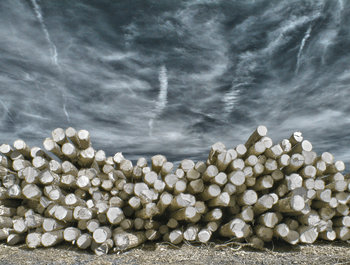|
| |
The melting point of a substance is the point at which it changes state from a solid to a liquid. This can be contrasted with a freezing point where a substance changes from a liquid to a solid. For most substances, the freezing point is the same as the melting point because the number is given as the equilibrium point between the two states. For example, in theory water won't freeze at 0°C nor will ice melt. The following are estimated melting points for selected elements and substances.| Element / Substance | Celsius | Fahrenheit | | Helium | -273 | -459 | | Hydrogen (H2) | -259 | -434 | | Oxygen (O2) | -219 | -362 | | Nitrogen (N2) | -210 | -346 | | Mercury | -39 | -38 | | Water / Ice | 0 | 32 | | Sea Ice | -2 | 29 | | Chocolate | 30 - 35 | 85 - 95 | | Butter | 32 | 90 | | Cheese | 50 - 80 | 120 - 180 | | Sodium | 98 | 208 | | Plastic (Polyethylene) | 141 | 286 | | Plastic (Polypropylene) | 179 | 354 | | Tin | 232 | 449 | | Nylon (66) | 264 | 507 | | Cadmium | 321 | 610 | | Lead | 327 | 621 | | Zinc | 420 | 787 | | Rocks (Igneous) | 600 - 1500 | 1112 - 2732 | | Magnesium | 650 | 1202 | | Aluminium | 660 | 1220 | | Calcium | 842 | 1548 | | Silver | 962 | 1763 | | Ceramics | 1000 - 3000 | 1832 - 5432 | | Gold | 1064 | 1948 | | Copper | 1085 | 1984 | | Concrete | 1200 | 2192 | | Manganese | 1246 | 2275 | | Glass (Soda-lime) | 1400 | 2552 | | Silicon | 1414 | 2577 | | Carbon Steel | 1425 - 1540 | 2600 - 2800 | | Nickel | 1455 | 2651 | | Iron | 1538 | 2800 | | Palladium | 1555 | 2831 | | Glass (Fused Quartz) | 1650 | 3002 | | Titanium | 1668 | 3034 | | Platinum | 1768 | 3215 | | Chromium | 1907 | 3465 | | Molybdenum | 2623 | 4753 | | Titanium Carbide | 3160 | 5720 | | Tungsten | 3422 | 6192 | | Graphite | 3527 | 6381 | | Diamond | 3527 | 6381 |
NotesFor illustrative purposes only. Many factors, such as atmospheric pressure, go in to calculating a melting point estimate such that the chart above is can be viewed as approximate.In theory, the freezing point of most substances is the same as its melting point. However, due to a process known as supercooling the freezing point of many substances is somewhat unpredictable. For example, water usually freezes just below 0°C but will only do so if there are minerals in the water that facilitate the crystallization process by serving as a nucleus. Without this, water can go as low as −48 °C (−55 °F) without freezing.It is a common myth that concrete doesn't melt. This is likely due to the fact that nobody tries to melt concrete but rather there is a great deal of data about how concrete is damaged in a fire. This all occurs at much lower temperatures than the melting point. It would also be very rare for a fire to actually melt concrete. This doesn't mean it can't be melted in a lab. Because concrete is made of multiple substances these all melt at different temperatures but all will completely melt at the temperature above (see reference below). The actual melting point of concrete will depend on its exact composition.Some things require a special process to melt. For example, wood is made of mostly carbon and water such that it can certainly melt but this could only occur without oxygen as it would burn before it would melt. Due to its carbon content the melting point of wood is likely similar to the melting point of a diamond above.All elements melt but not all substances will return to their original physical form after a cycle of melting and freezing. Therefore, a melting point isn't usually calculated for these substances. This doesn't mean they can't be melted.It is often argued that a substance doesn't have a melting point because it goes through physical or chemical changes before melting. This seems like a weak argument. For example, glass will crack due to thermal expansion before melting but it will still ultimately melt. In some cases, parts of a substance will turn into a gas before the rest of the substance melts. This may be a turbulent process. For example, the water in concrete can become a gas while the concrete is still a solid. This may cause the concrete to break apart.All elements melt and all things are made up of elements. Therefore, it seems likely that all things can melt. This may have some odd exceptions based on special conditions. For example, you can't melt a single atom.
If you enjoyed this page, please consider bookmarking Simplicable.
ReferencesHager, Izabela. . Behaviour of cement concrete at high temperature. Bulletin of the Polish Academy of Sciences, 2013.
TrendingThe most popular articles on Simplicable in the past day.
Recent posts or updates on Simplicable.
Site Map
© 2010-2023 Simplicable. All Rights Reserved. Reproduction of materials found on this site, in any form, without explicit permission is prohibited.
View credits & copyrights or citation information for this page.
|



















